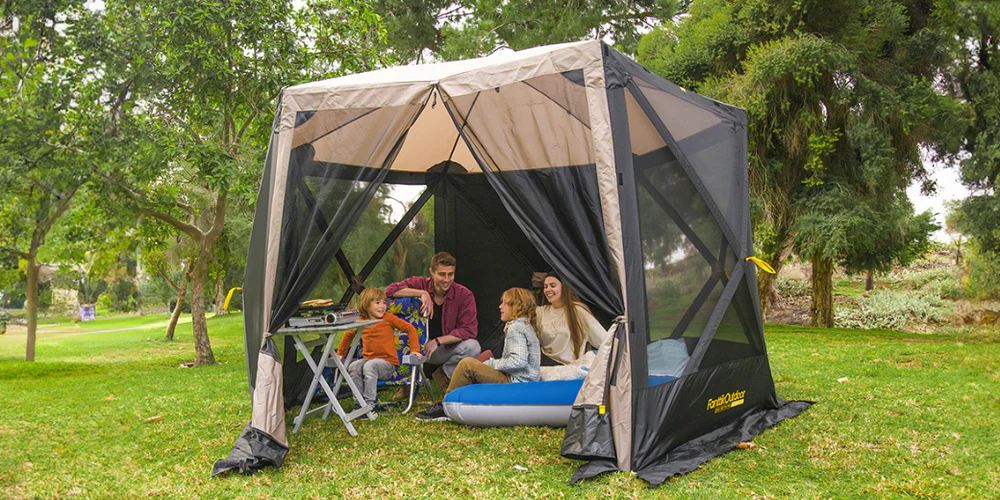Master the Art of Anchoring Your Pop-Up Canopy for Ultimate Stability and Safety!
When it comes to outdoor events, whether it’s a backyard barbecue, a beach day, or a festival, having a pop-up canopy can be a game-changer. However, without proper anchoring, these canopies can turn from a shelter into a hazard. Picture this: a sudden gust of wind sends your canopy flying across the park, knocking over tables and causing chaos. This is not just an inconvenience but a serious safety risk. That’s why understanding how to anchor your pop-up canopy effectively is vital for stability and safety. In this article, we will explore the best techniques and practices to ensure your canopy stands strong against the elements, keeping your event secure and enjoyable.

Understanding Pop-Up Canopy Basics
A pop-up canopy is a portable, temporary shelter that is easy to set up and take down, making it ideal for various outdoor occasions. These canopies provide shade and protection from light rain, enhancing the comfort of your gatherings. However, their lightweight nature means that they can also be easily affected by wind and weather changes. This is where anchoring becomes crucial. Depending on where you set up your canopy—be it on grass, gravel, or sand—the need for effective anchoring techniques will vary. A firm foundation is essential to prevent accidents and ensure the canopy remains stable throughout your event.
Types of Anchoring Techniques
There are several anchoring methods you can use to secure your pop-up canopy. Each method has its advantages and disadvantages, and the choice often depends on the environment and weather conditions. Understanding these methods will help you make an informed decision on how best to anchor your canopy. Ground stakes are a common choice for grassy areas, providing a solid grip. However, if you're on concrete or sand, you might need to consider weights or sandbags. Some people even use a combination of methods to ensure maximum stability. Exploring these techniques will empower you to keep your canopy secure and your event safe.
Ground Stakes
Ground stakes are an effective way to anchor your pop-up canopy if you're setting up on soil. To use them effectively, drive the stakes at a 45-degree angle into the ground, ensuring they’re secure and deep enough to hold against wind pressure. However, be mindful of the type of soil you’re working with; soft or sandy soil may not provide the same stability as firm, compact soil. During a family picnic last summer, my friend Sarah learned this the hard way when her stakes pulled out of the ground, sending her canopy tumbling in a gust of wind. Now, she always checks the soil conditions before setting up!
Weights and Sandbags
If you're in an environment where ground stakes aren't feasible, using weights or sandbags is a great alternative. The general rule of thumb is to use at least 20-40 pounds of weight per leg of the canopy, depending on the wind conditions. When I attended a local craft fair, I noticed that many vendors were using sandbags filled with gravel, which not only provided the necessary weight but also looked appealing. Make sure to distribute the weight evenly across all four legs to maintain balance and prevent tipping.
Step-by-Step Anchoring Process
To anchor your pop-up canopy properly, follow these steps. First, prepare the area by clearing debris and ensuring the ground is level. Next, set up the canopy frame without extending the legs fully. Position each leg in its desired location, then secure the anchors. If using ground stakes, drive them into the soil at a 45-degree angle. For weights and sandbags, attach them to each leg, ensuring they are secure. Finally, fully extend the canopy and check for any signs of instability. If you notice any wobbling, adjust the weights or stakes accordingly. My friend Mike always emphasizes the importance of this step; he once had a canopy collapse during an event because he didn’t secure it properly!
Safety Considerations
Safety is paramount when it comes to anchoring your pop-up canopy. Always check the weather forecast before setting up; high winds can easily turn a canopy into a danger. Be aware of your surroundings and potential hazards, such as nearby trees or power lines. Regularly inspect your anchors throughout the event, particularly if you notice a shift in the weather. It’s also a good practice to have someone monitor the canopy, especially during windy conditions. By taking these precautions, you can enjoy your outdoor event without worrying about safety issues.
Ensuring Your Canopy's Stability and Safety
In summary, properly anchoring your pop-up canopy is essential for maximizing stability and safety during outdoor events. By understanding the basics of pop-up canopies, exploring different anchoring techniques, and following a systematic anchoring process, you can ensure that your canopy remains secure against the elements. Remember to always prioritize safety and be mindful of changing weather conditions. With these tips in mind, you can enjoy your outdoor gatherings with peace of mind, knowing that your canopy is anchored effectively.








